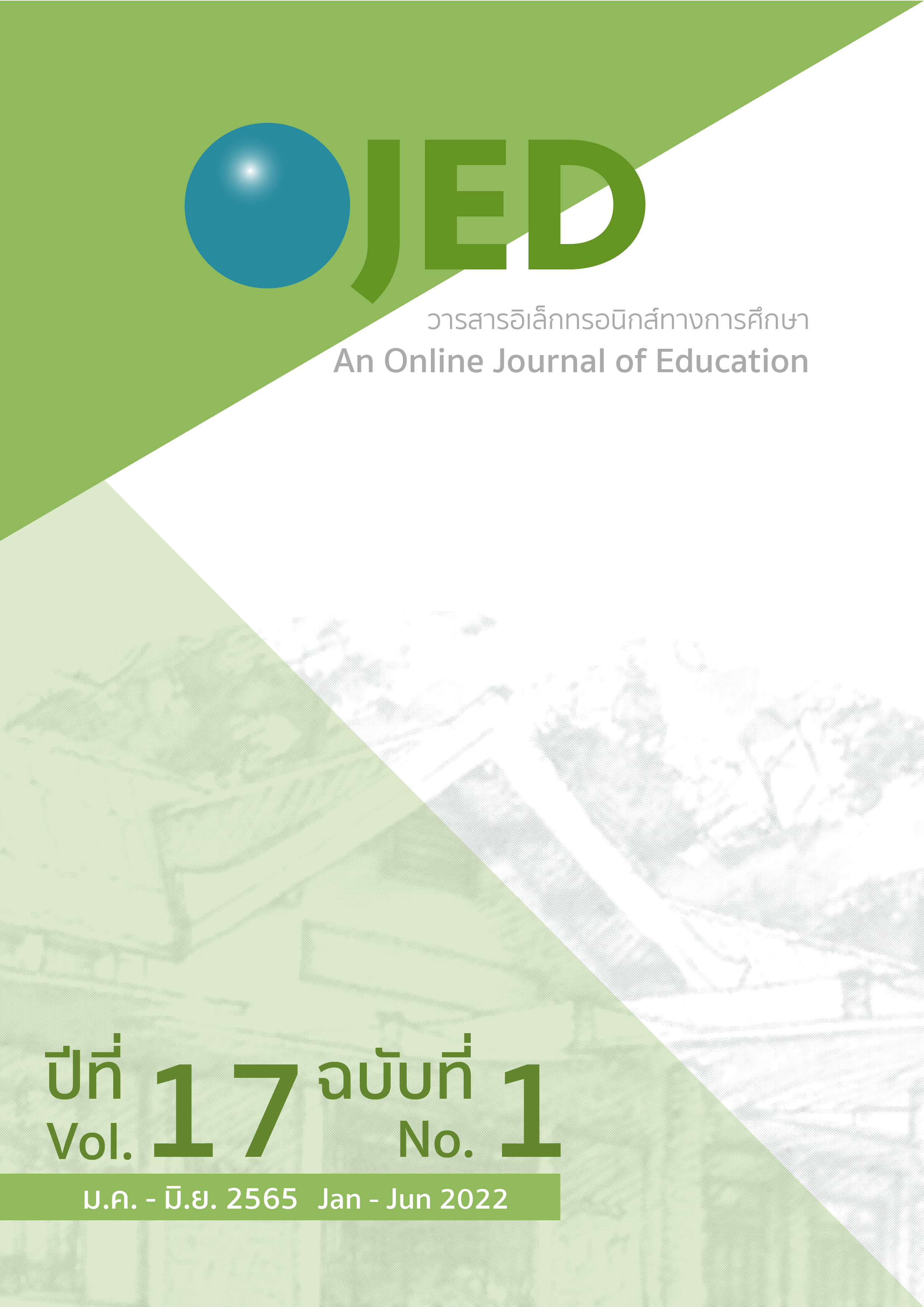The Development of Young Children’s Career Awareness by Using Provision
DOI:
https://doi.org/10.14456/ojed.2022.11Keywords:
young children’s, career awareness, project-based learningAbstract
The purpose of this research was to develop young children’s career awareness by using learning provisions of project-based learning. The subjects used in this study consisted of 33 ranging in age from 4 to 5 years old. The instruments in this study included 1) 24 lesson plans of learning provisions of project-based learning for 3 projects: Open the world of careers in the Ban Yuan Samsen community, Career master and my dream job; and 2) The interview career awareness of young children. The obtained data was analyzed by mean, standard deviation, and content analysis. The results of the research indicated that young children who engaged in learning provisions of project-based learning. they had an average score of 2.45 and standard deviation of 1.37, and after the experiment they had an average score of 12.61 and standard deviation of 0.66. Children could develop in two aspects had higher post-test scores.
References
ธิดารัตน์ กาญจนวัฒน์. (2562, 4 มกราคม). ผลสำรวจอาชีพในฝันของเด็กไทยปี 2562. Adecco. https://adecco.co.th/th/knowledge-center/detail/children-dream-career-survey-2019
สถาบันพัฒนาคุณภาพวิชาการ. (2560). การพัฒนาการจัดการเรียนรู้แบบ Active learning โดยบูรณาการสะเต็มศึกษาภาษาอังกฤษสู่การประเมินเด็กตามมาตรฐาน. สถาบันพัฒนาคุณภาพวิชาการ พว.
สำนักวิชาการและมาตรฐานการศึกษา สำนักงานคณะกรรมการการศึกษาขั้นพื้นฐาน กระทรวงศึกษาธิการ. (2560). หลักสูตรการศึกษาปฐมวัยพุทธศักราช2560. ชุมชนสหกรณ์การเกษตรแห่งประเทศไทย.
Butcher, K. & Pletcher, J. (2015, October 20). Self-efficacy is important to your young child–Part 1. https://www.canr.msu.edu/news/self_efficacy_is_important_to_your_young_child_part_1
Butkatunyoo, O. (2019, February 7). The development of creative careers learning model based on steam education for young children. https://books.googleusercontent.com/books/content?req=AKW5Qaft2nzetN8uYOMbkk830NS96Kg2DYe5cX7Uzicd-HlY5i5NOkld4QpB8if7LfQAyMimZU_udYbwZTf2grAM3T3b0jm2NGaLSsjevqReZ_h2TLy_LIpCeDsMTKV0b-4YjEnOItbNGs91H9mXwfK19lRZueFHFx55F39yy7oxv_znuuoA3ruWCWv5-w6Vz9BQDawWsxjWIciAU7hpYUe3jfv7L8_Mtcru4mjNx1S-DcoztGnD1hKVLxLppItYcFHxBb8ZqK_GGacOtSy8ql1q5w_fFRLsLnvtWTGe9uu0J7advbPHrxA
Cahill, M. & Furey, E. (2017, October 3). The Early Years Career Development for Young Children: a guide for educators. CERIC. https://cica.org.au/wp-content/uploads/The-Early-Years-Career-Development-for-Young-Children-Educators-Guide-October-2017.pdf
Career Planet TM. (2019). What are Steam Subjects?. https://career planet.co.za/what-are-stem-subjects/
Claussen, D. (2017). A Review of Literature: Project Based Learning in Early Childhood. https://nwcommons.nwciowa.edu/cgi/viewcontent.cgi?article=1057&context=education_masters
Helm, J. H., & Katz, L. G. (2011). Young investigators the project approach in the early years (2nd ed.). https://collegelearners.com/books/young-investigators-pdf-free-download/
Head Start. (2020). Understanding STEAM and how children use it. http://msafterschool.org/wp-content/uploads/2020/05/steam-ipdf.pdf
Patton, A. (2017). Work that matters : The teacher’s guide to project-based learning. https://www.innovationunit.org/wp-content/uploads/ 2017/ 04/Work-That-Matters-Teachers-Guide-to-Project-based-Learning.pdf
Rojewski, J. W., Lee, I. H., Gregg, N., & Gemici, S. (2012). Development patterns of occupational aspirations in adolescents with high-incidence disabilities. https://journals.sagepub.com/doi/abs/10.1177/001440291207800202
SickKids. (2012, August 30). Self-efficacy in children. https://www.aboutkidsh Ealth.ca/Article? contentid=630&language=English
Witchger, R., & Honeycutt, A. (2015). North Carolina Career Clusters Guide. https://www.nccommunitycolleges.edu/sites/default/files/basic-pages/student-services/nc_career_clusters_guide_2015.pdf
Downloads
Published
How to Cite
Issue
Section
License
Copyright (c) 2022 An Online Journal of Education

This work is licensed under a Creative Commons Attribution-NonCommercial-NoDerivatives 4.0 International License.




